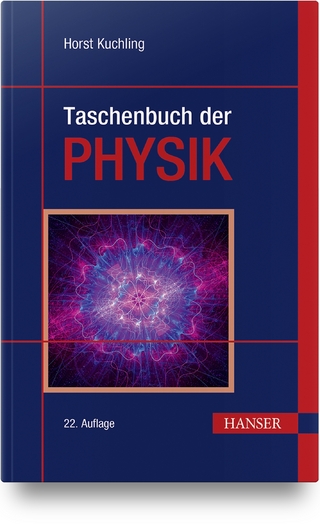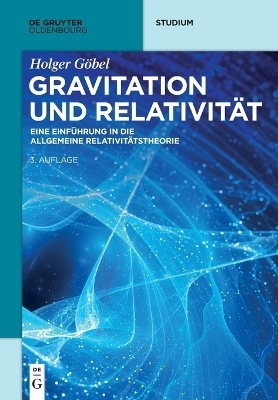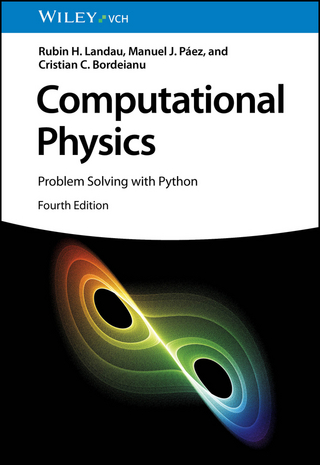
College Physics
Pearson (Verlag)
978-0-321-87972-1 (ISBN)
- Titel erscheint in neuer Auflage
- Artikel merken
¿
MasteringPhysics is not a self-paced technology and should only be purchased when required by an instructor.
¿
--------------------------------------------------------------
Building on the research-proven instructional techniques introduced in Knight’s Physics for Scientists and Engineers, College Physics: A Strategic Approach sets a new standard for algebra-based introductory physics—gaining widespread critical acclaim from professors and students alike. The text, supplements, and MasteringPhysics® work together to help students see and understand the big picture, gain crucial problem-solving skills and confidence, and better prepare for lecture and their future.
For the Third Edition, Randy Knight, Brian Jones, and Stuart Field have incorporated student feedback and research to strengthen their focus on student learning, and to apply the best results from educational research and extensive user feedback and metadata.
This program presents an unparalleled teaching and learning experience, uniquely effective and integrated.
Personalize learning with MasteringPhysics: MasteringPhysics provides students with engaging experiences that coach them through physics with specific wrong-answer feedback, hints, and a wide variety of educationally effective content.
Prepare for lecture: Prepare students for lecture with innovative and engaging media tools, tailored carefully to reinforce the textbook.
Understand the big picture: Enable students to understand the connections between topics, the real-world context, and the overarching themes, skills, and principles of physics using refined and expanded learning tools.
Develop problem-solving skills: Equip students with problem-solving tactics and strategies through expanded guidance and practice in the text and online in MasteringPhysics.
Foster skills for the MCAT: Gear students up for the new MCAT with enhanced life-science and biomedical applications in the text and problems, and increased emphasis on reasoning with real-world situations and data.
¿
¿
Randy Knight has taught introductory physics for 32 years at Ohio State University and California Polytechnic University, where he is Professor Emeritus of Physics. Randy received a Ph.D. in physics from the University of California–Berkeley. He was a post-doctoral fellow at the Harvard-Smithsonian Center for Astrophysics before joining the faculty at Ohio State University. It was at Ohio State, under the mentorship of Professor Leonard Jossem, that he began to learn about the research in physics education that, many years later, led to Five Easy Lessons: Strategies for Successful Physics Teaching, Physics for Scientists and Engineers: A Strategic Approach, and now to this book. Randy’s research interests are in the fields of lasers, spectroscopy, and environmental science. When he’s not in front of a computer, you can find Randy hiking, sea kayaking, playing the piano, or spending time with his wife Sally and their six cats. Brian Jones has won several teaching awards at Colorado State University during his 25 years teaching in the Department of Physics. His teaching focus in recent years has been the College Physics class, including writing problems for the MCAT exam and helping students review for this test. In 2011, Brian was awarded the Robert A. Millikan Medal of the American Association of Physics Teachers for his work as director of the Little Shop of Physics, a hands-on science outreach program. He is actively exploring the effectiveness of methods of informal science education and how to extend these lessons to the college classroom. Brian has been invited to give workshops on techniques of science instruction throughout the United States and in Belize, Chile, Ethiopia, Azerbaijan, Mexico, and Slovenia. Brian and his wife Carol have dozens of fruit trees and bushes in their yard, including an apple tree that was propagated from a tree in Isaac Newton’s garden. Stuart Field has been interested in science and technology his whole life. While in school he built telescopes, electronic circuits, and computers. After attending Stanford University, he earned a Ph.D. at the University of Chicago, where he studied the properties of materials at ultralow temperatures. After completing a postdoctoral position at the Massachusetts Institute of Technology, he held a faculty position at the University of Michigan. Currently at Colorado State University, Stuart teaches a variety of physics courses, including algebra-based introductory physics, and was an early and enthusiastic adopter of Knight’s Physics for Scientists and Engineers. Stuart maintains an active research program in the area of superconductivity. Stuart enjoys Colorado's great outdoors, where he is an avid mountain biker; he also plays in local ice hockey leagues.
I. FORCE AND MOTION
1. Representing Motion
2. Motion in One Dimension
3. Vectors and Motion in Two Dimensions
4. Forces and Newton’s Laws of Motion
5. Applying Newton’s Laws
6. Circular Motion, Orbits, and Gravity
7. Rotational Motion
8. Equilibrium and Elasticity
II. CONSERVATION LAWS
9. Momentum
10. Energy and Work
11. Using Energy
III. PROPERTIES OF MATTER
12. Thermal Properties of Matter
13. Fluids
IV. OSCILLATIONS AND WAVES
14. Oscillations
15. Traveling Waves and Sound
16. Superposition and Standing Waves
V. OPTICS
17. Wave Optics
18. Ray Optics
19. Optical Instruments
VI. ELECTRICITY AND MAGNETISM
20. Electric Fields and Forces
21. Electrical Potential
22. Current and Resistance
23. Circuits
24. Magnetic Fields and Forces
25. Electromagnetic Induction and Electromagnetic Waves
26. AC Electricity
VII. MODERN PHYSICS
27. Relativity
28. Quantum Physics
29. Atoms and Molecules
30. Nuclear Physics
| Erscheint lt. Verlag | 3.3.2015 |
|---|---|
| Sprache | englisch |
| Maße | 216 x 276 mm |
| Gewicht | 2290 g |
| Themenwelt | Naturwissenschaften ► Physik / Astronomie |
| ISBN-10 | 0-321-87972-4 / 0321879724 |
| ISBN-13 | 978-0-321-87972-1 / 9780321879721 |
| Zustand | Neuware |
| Haben Sie eine Frage zum Produkt? |
aus dem Bereich



